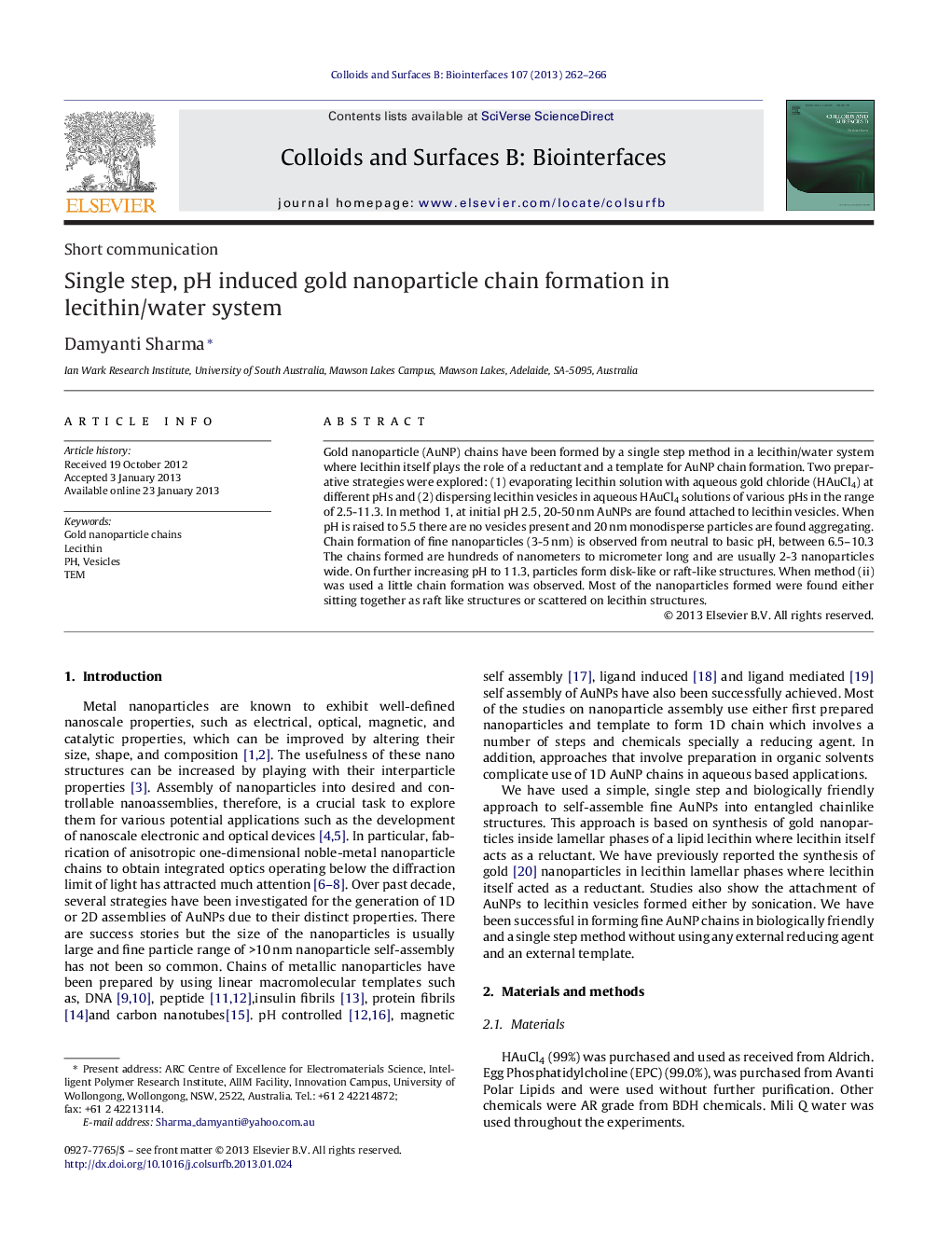| Article ID | Journal | Published Year | Pages | File Type |
|---|---|---|---|---|
| 600148 | Colloids and Surfaces B: Biointerfaces | 2013 | 5 Pages |
Gold nanoparticle (AuNP) chains have been formed by a single step method in a lecithin/water system where lecithin itself plays the role of a reductant and a template for AuNP chain formation. Two preparative strategies were explored: (1) evaporating lecithin solution with aqueous gold chloride (HAuCl4) at different pHs and (2) dispersing lecithin vesicles in aqueous HAuCl4 solutions of various pHs in the range of 2.5-11.3. In method 1, at initial pH 2.5, 20-50 nm AuNPs are found attached to lecithin vesicles. When pH is raised to 5.5 there are no vesicles present and 20 nm monodisperse particles are found aggregating. Chain formation of fine nanoparticles (3-5 nm) is observed from neutral to basic pH, between 6.5–10.3 The chains formed are hundreds of nanometers to micrometer long and are usually 2-3 nanoparticles wide. On further increasing pH to 11.3, particles form disk-like or raft-like structures. When method (ii) was used a little chain formation was observed. Most of the nanoparticles formed were found either sitting together as raft like structures or scattered on lecithin structures.
Graphical abstractFigure optionsDownload full-size imageDownload as PowerPoint slideHighlights► Gold nanoparticle chains have been prepared by a biologically friendly and single step method. ► Variation in pH of the precursor HAuCl4 is an important controlling factor for the chain formation. ► Chains are consisted of 3-7 nm gold nanoparticles and are either single nanoparticle wide or 2-3 nanoparticles wide. ► Chains are hundreds of nanometre to micron long and have open end or entangled.
